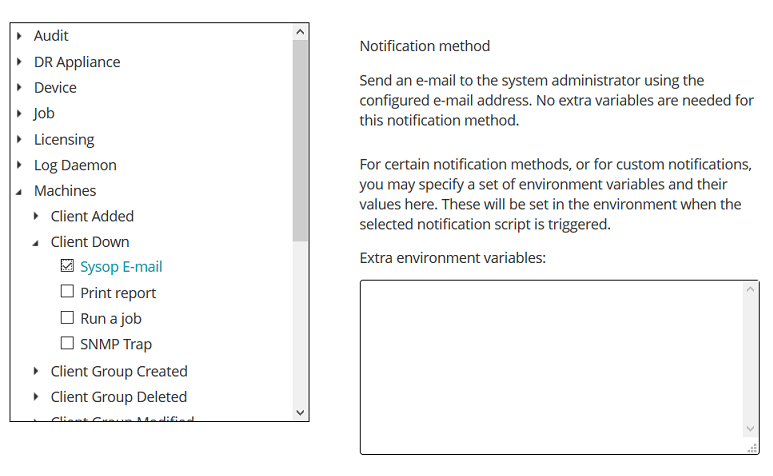Using global notification methods
This section includes the following topics:
About global notification methods
The available methods include the following:
|
• |
Sysop Email: Use this method to send an email notification to the Administrator when an event occurs. |
|
• |
Print Report: Use this method to print a report after it is successfully generated from the View Reports page. This method can only be used for Report Job events. |
|
• |
Run a Job: Use this method to run a job when an event occurs. |
|
• |
SNMP Trap: Use this method to send SNMP traps (notification) to a network manager host when an event occurs. |
Setting up a global notification method
|
1 |
In the Navigation pane, click Configure Notifications. |
|
2 |
On the Editing Global Notification Profile page, open the event class, and then open the event type that you want to be notified about. |
|
4 |
Click Save to save the global notification profile. |

